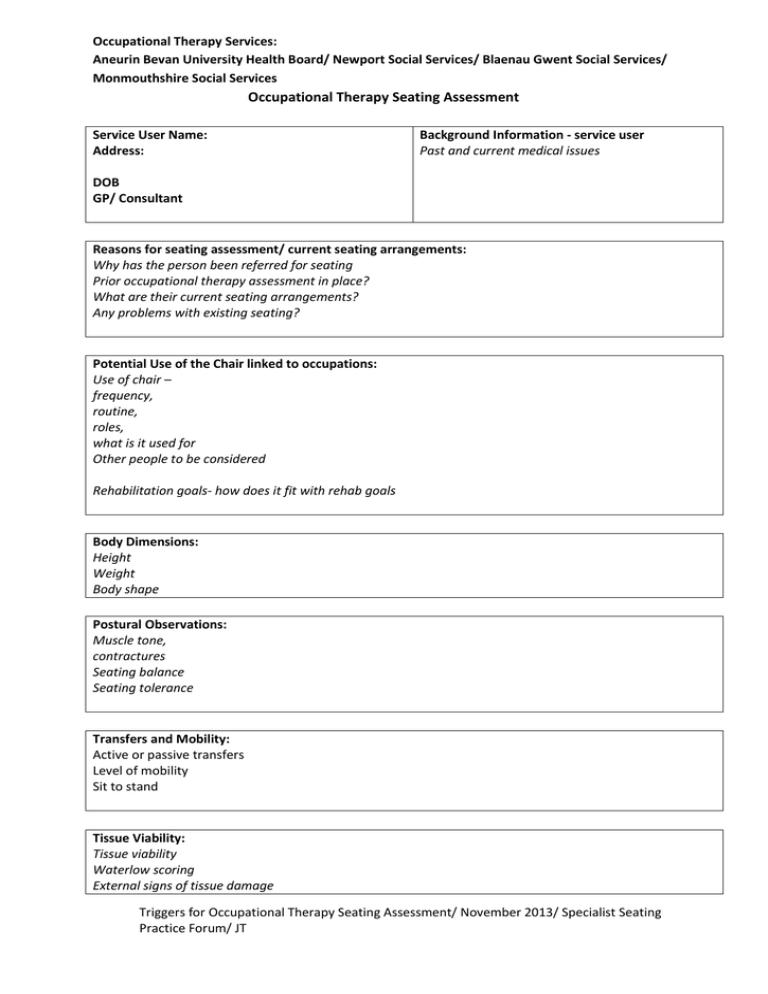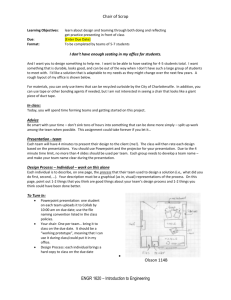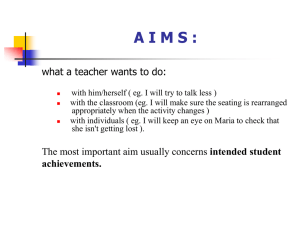COT - Specialist Seating Assessment (Guidance)
advertisement

Occupational Therapy Services: Aneurin Bevan University Health Board/ Newport Social Services/ Blaenau Gwent Social Services/ Monmouthshire Social Services Occupational Therapy Seating Assessment Service User Name: Address: Background Information - service user Past and current medical issues DOB GP/ Consultant Reasons for seating assessment/ current seating arrangements: Why has the person been referred for seating Prior occupational therapy assessment in place? What are their current seating arrangements? Any problems with existing seating? Potential Use of the Chair linked to occupations: Use of chair – frequency, routine, roles, what is it used for Other people to be considered Rehabilitation goals- how does it fit with rehab goals Body Dimensions: Height Weight Body shape Postural Observations: Muscle tone, contractures Seating balance Seating tolerance Transfers and Mobility: Active or passive transfers Level of mobility Sit to stand Tissue Viability: Tissue viability Waterlow scoring External signs of tissue damage Triggers for Occupational Therapy Seating Assessment/ November 2013/ Specialist Seating Practice Forum/ JT Potential pressure risks Current strategies to prevent/ reduce pressure areas Pain and sensation: Pain – generalised, variation with movement, degree of pain, strategies to manage pain Sensation- areas of varied or lost sensation sensory loss Risks: Personal Environmental Manual Handling Linked to activity Related to other people Environment: Where will the chair be used Limitations of the environment Aesthetic considerations Impact on the environment for others Behaviour/ psychological/ cognition/ motivation Person’s perspective of use of chair Carers perspective of use of chair Behaviour Cognition Perception Motivation to engage in activities Whether the occupations will motivate and engage service user What difference could the chair potentially make Perspectives of seating- person and carers: Opinions and views of the person, their carers and family regarding the need for and value of a different chair OT Formulation of the seating issues: A summary of the most important factors that demonstrates clinical reasoning and indicates the reasons for your proposed plan. Plan for interventions: Triggers for Occupational Therapy Seating Assessment/ November 2013/ Specialist Seating Practice Forum/ JT


